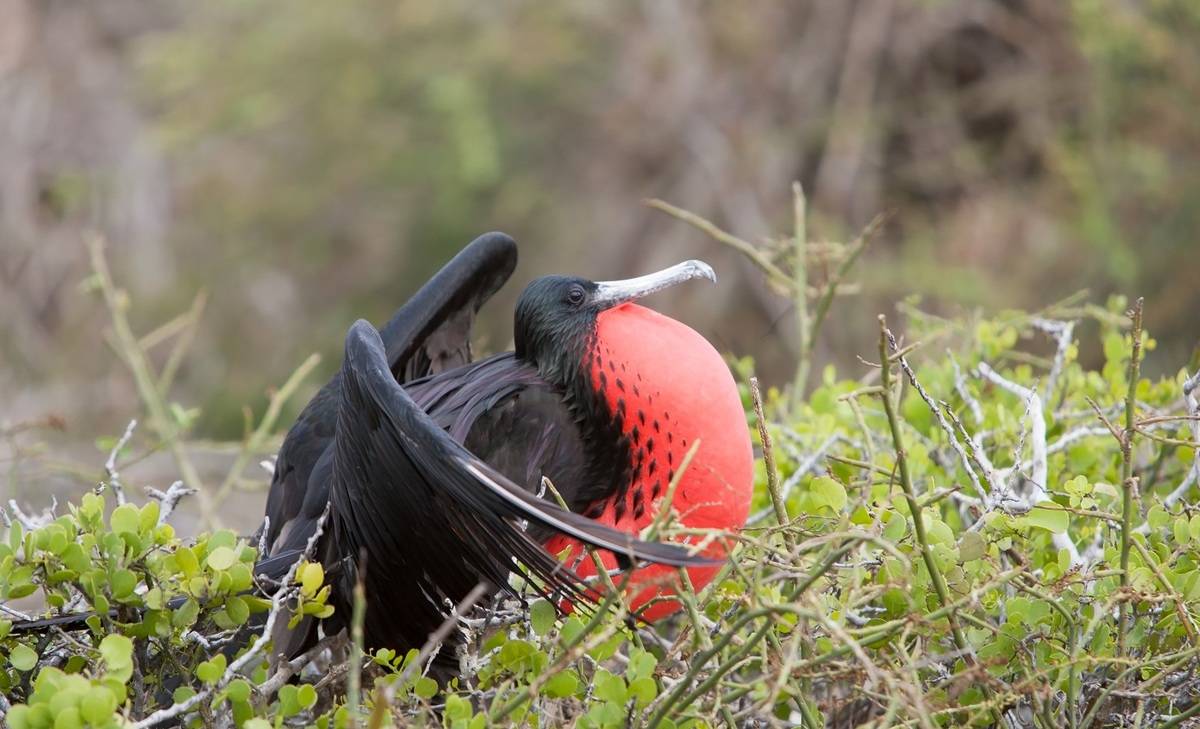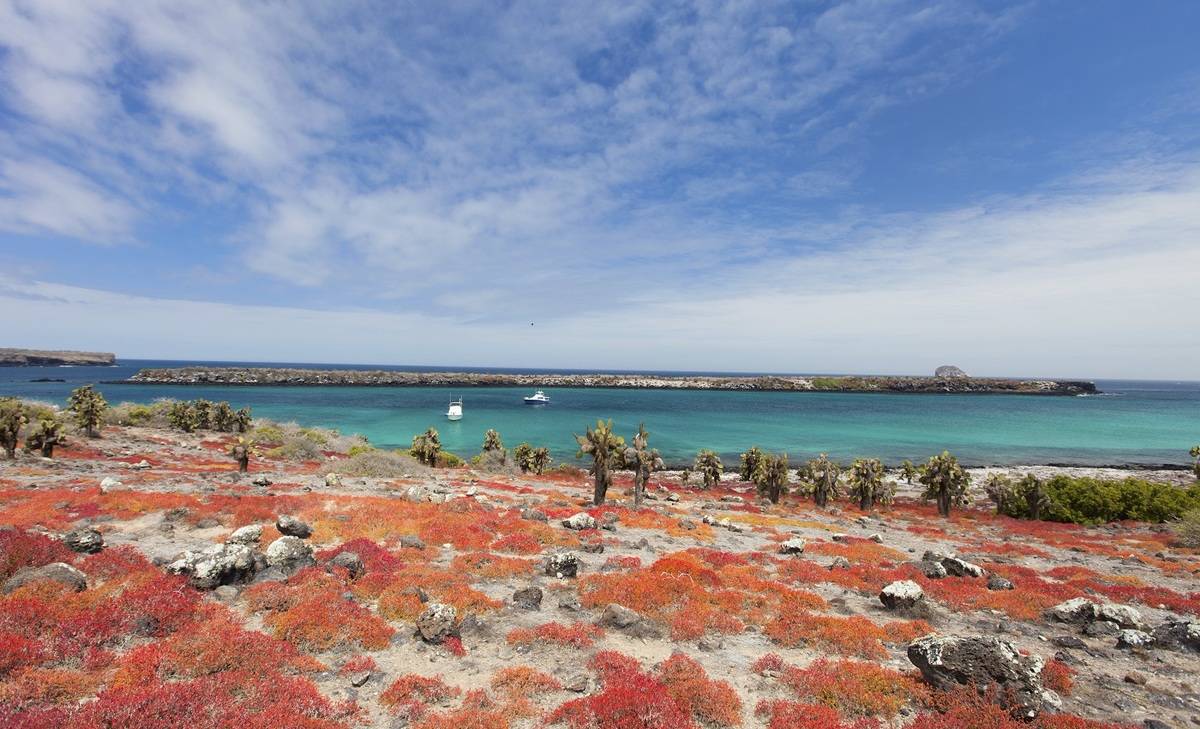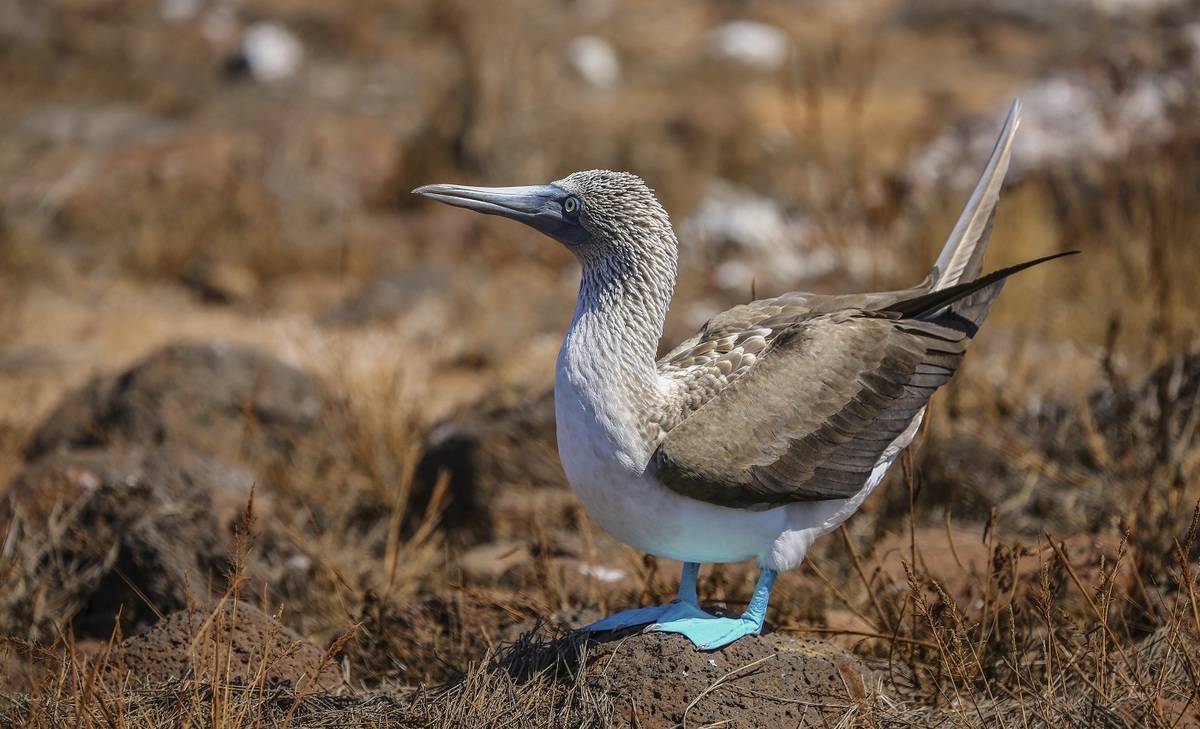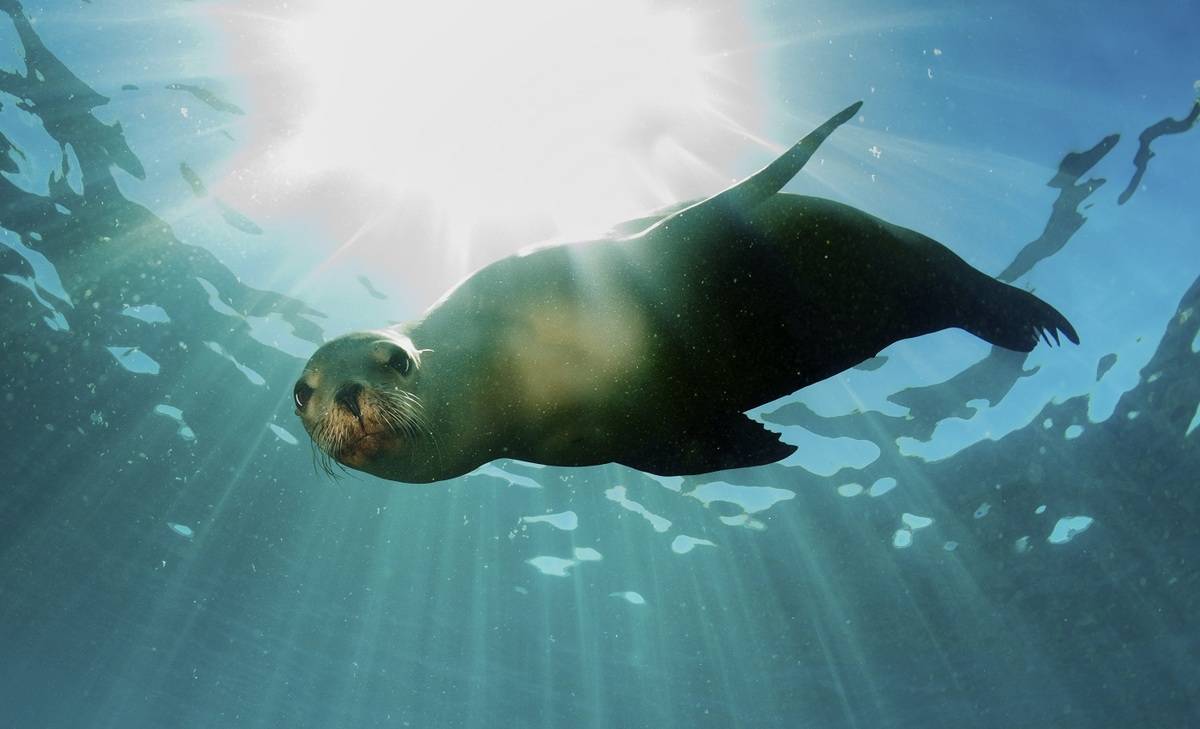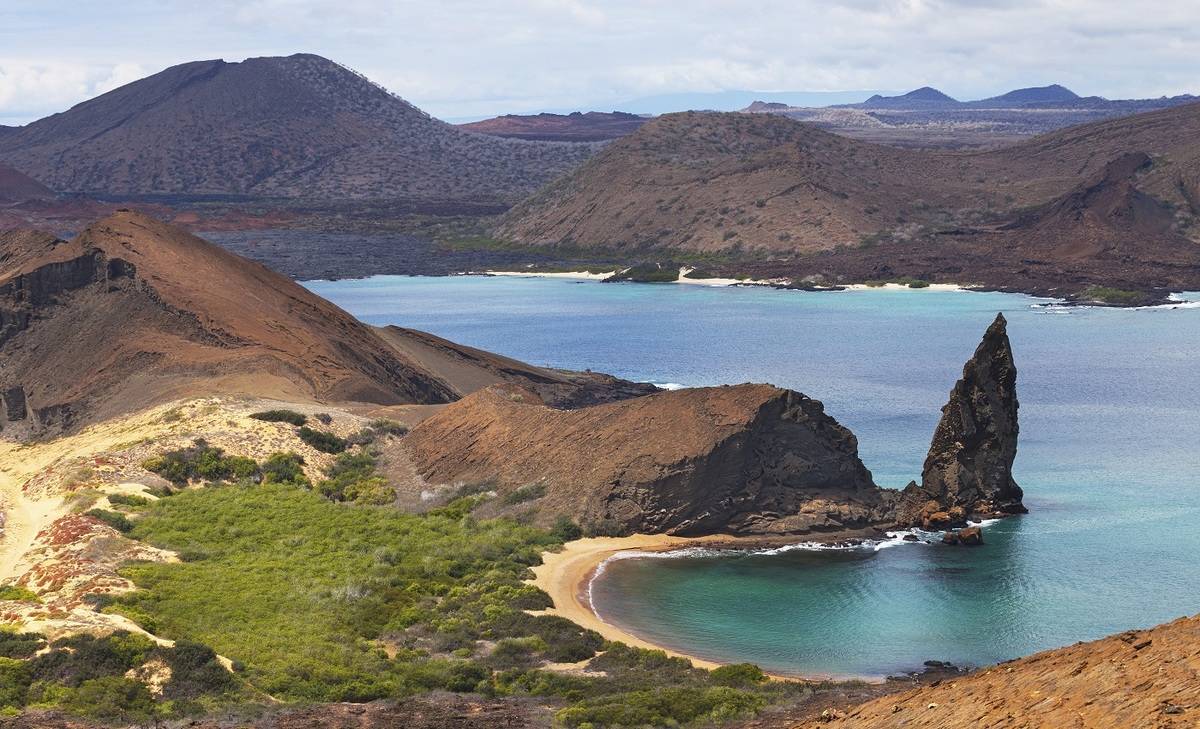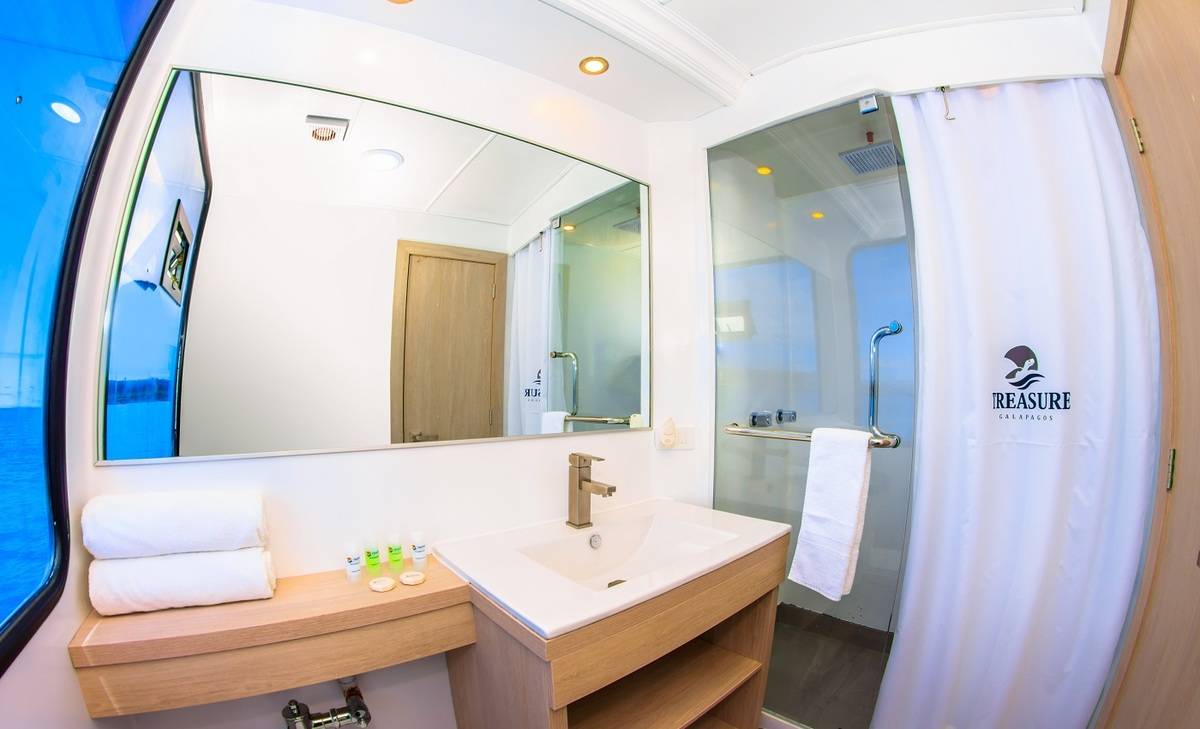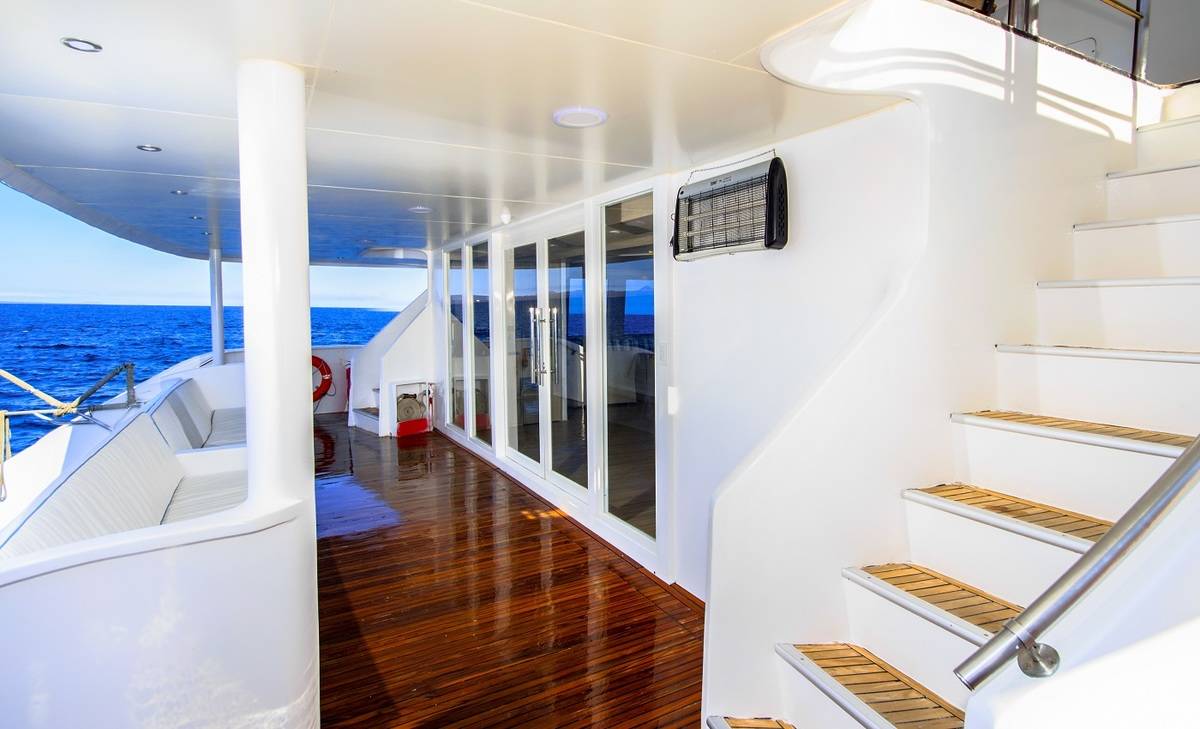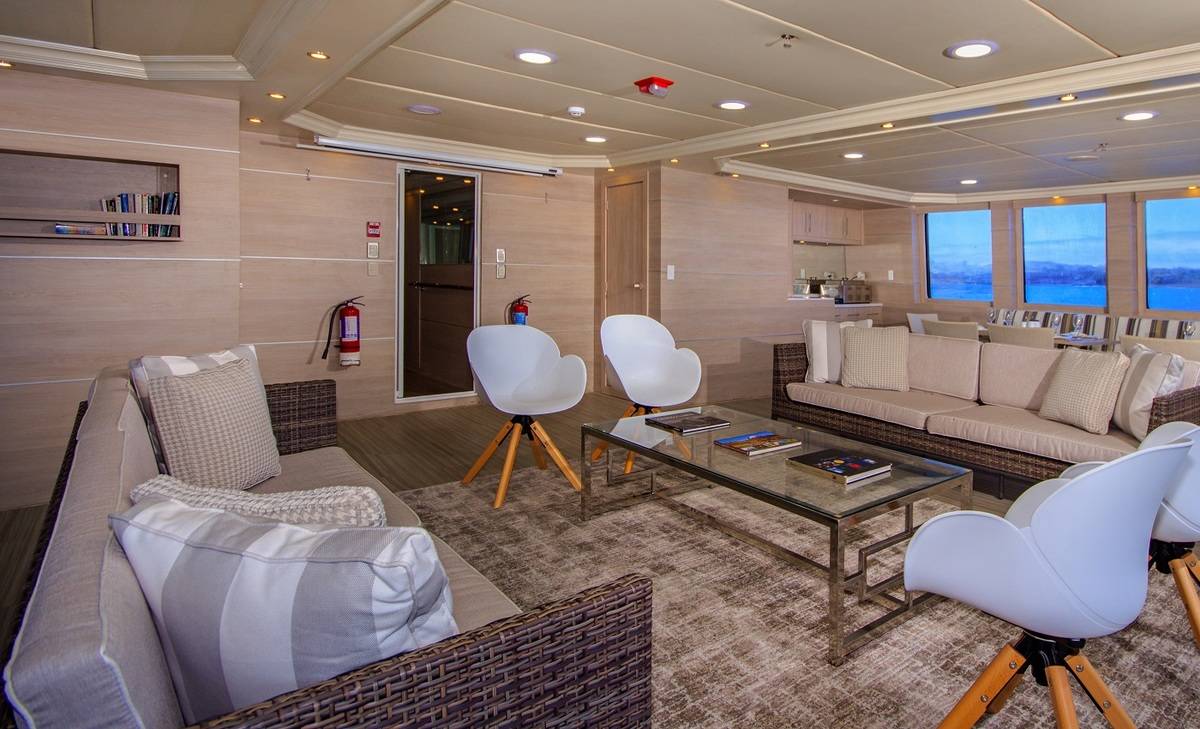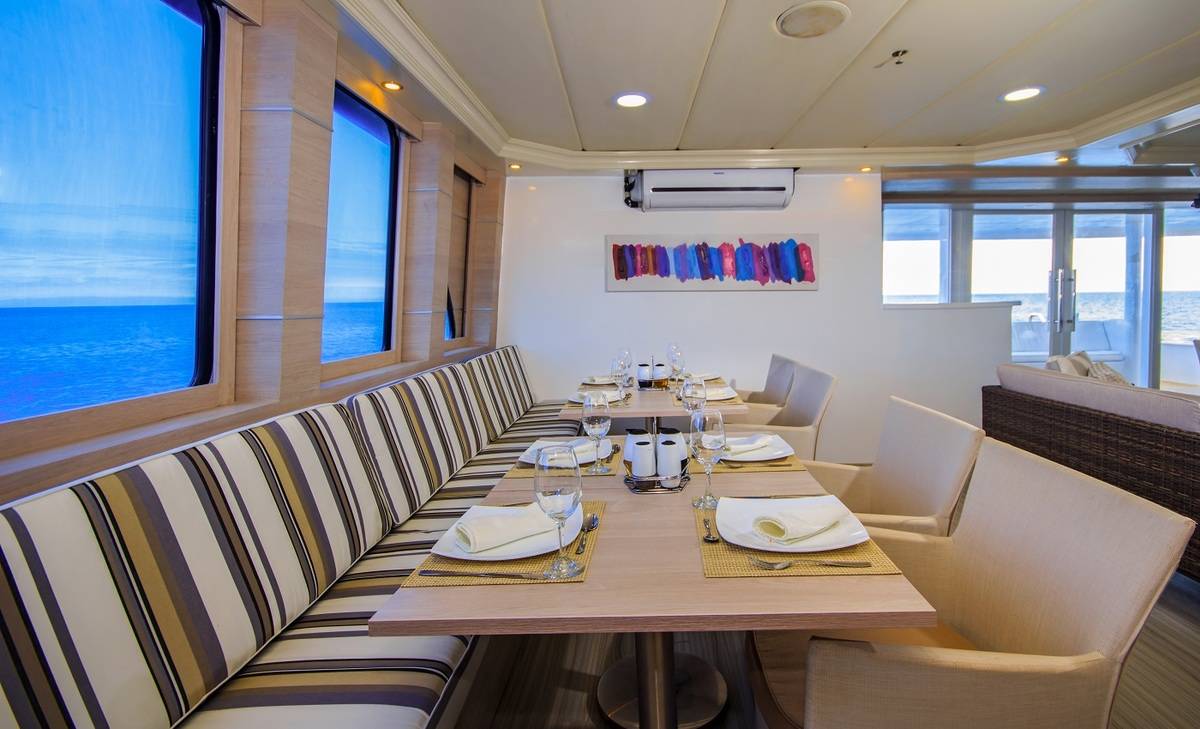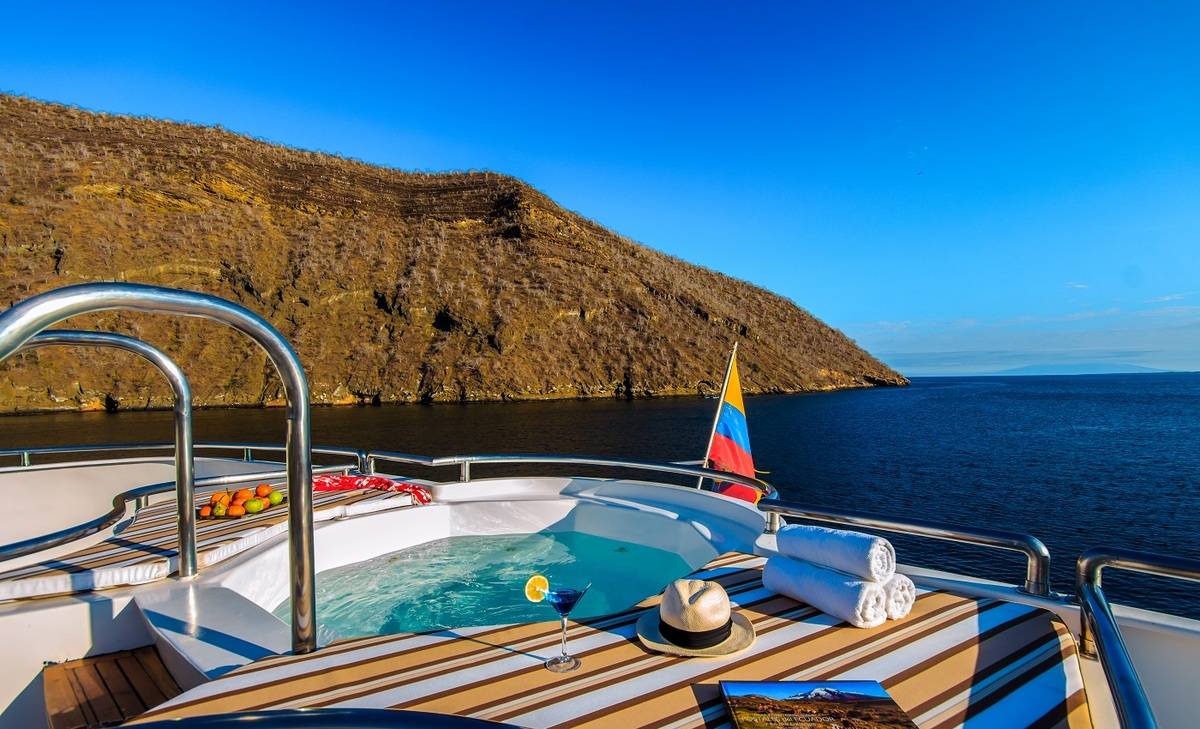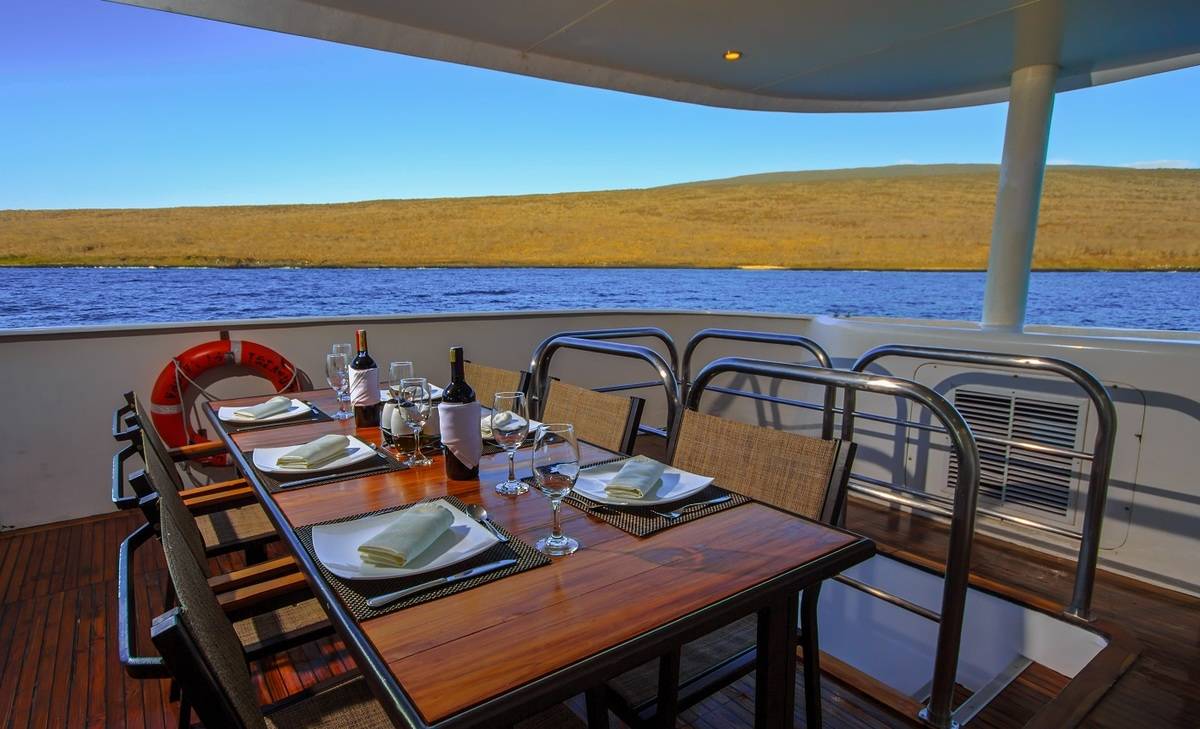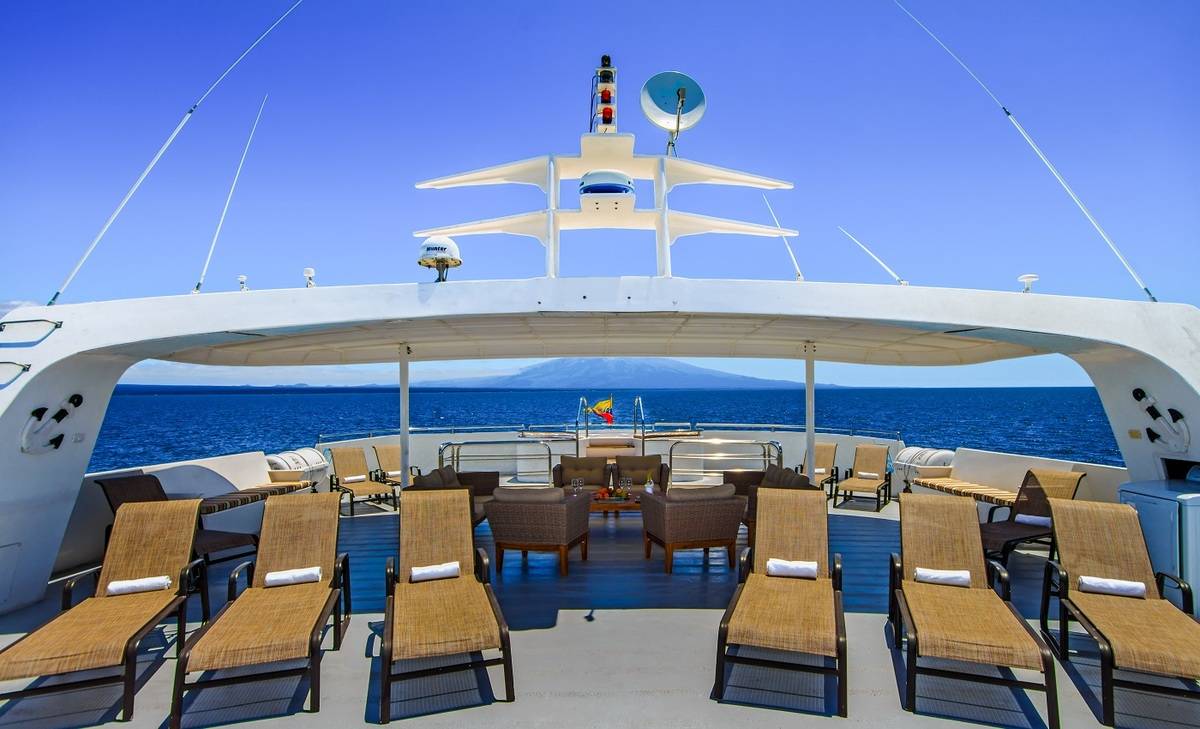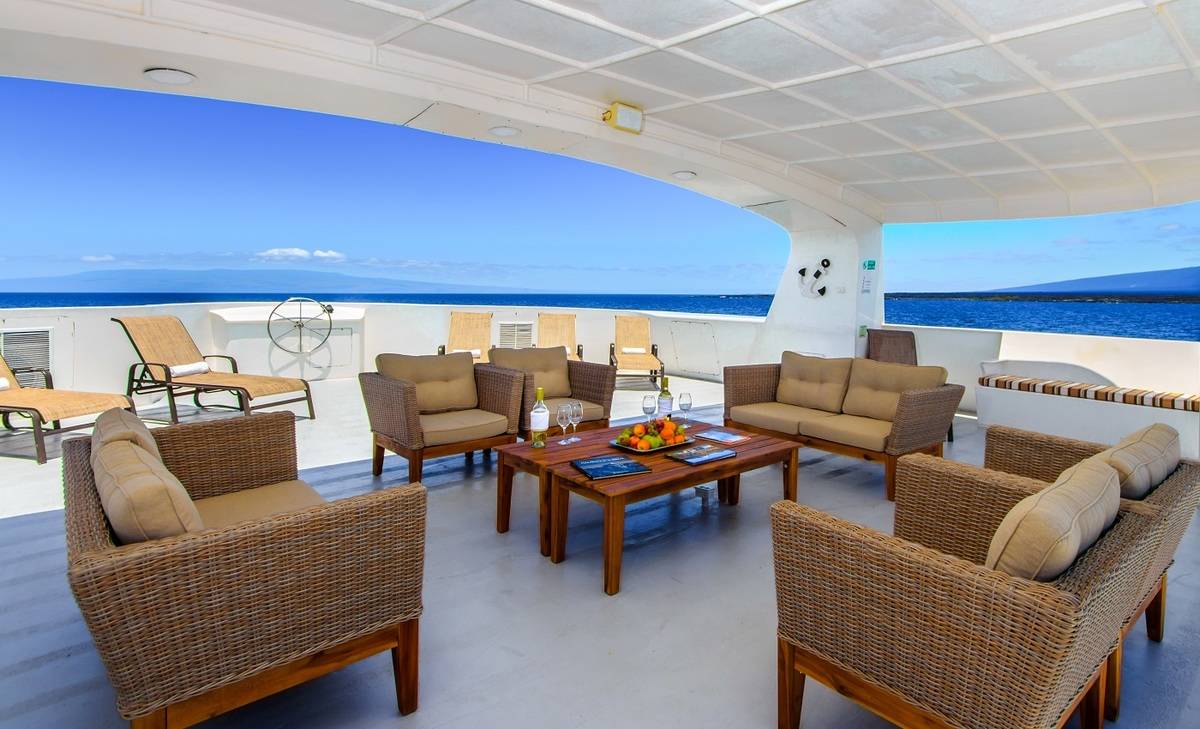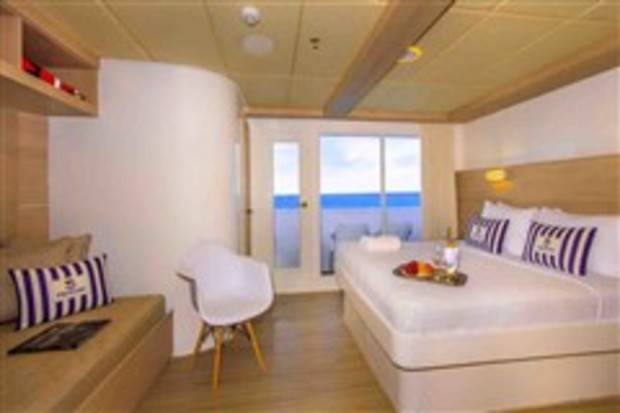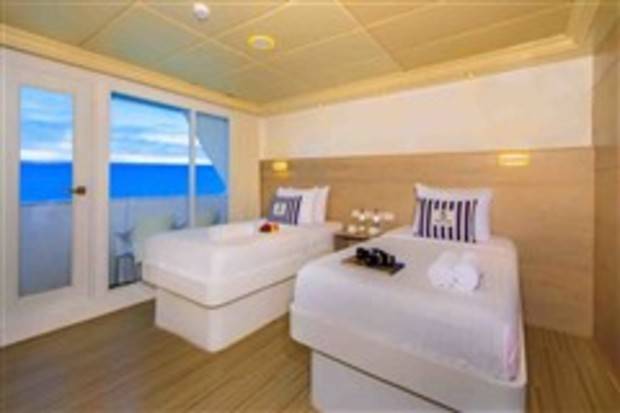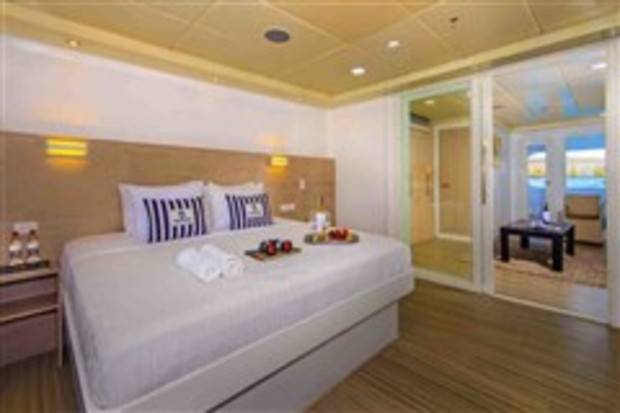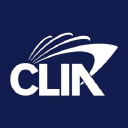Central Galapagos Islands
5 Days - Treasure of Galapagos
Discover the Galapagos Islands in style on board the contemporary Treasure of Galapagos catamaran. The Treasure boasts large cabins and several outdoor space. On this 5 day cruise we travel from Baltra to San Cristobal Islands stopping at such highlights as North Seymour Island where you will find Blue Footed Boobies and Bartolomé Island where you will visit Pinnacle Rock. Along the way you will have the opportunity to snorkel and enjoy close up encounters with the endemic wildlife of the Galapagos Islands.

Home » 5 Day Treasure of Galapagos: Central Galapagos Islands (A)
Itinerary Highlights
- First class accommodations and service for 16 passengers.
- Highly qualified naturalist guide and friendly crew.
- Very comfortable social area
- Visit Pinnacle Rock
Itinerary in Brief
- Day 1: Baltra - Charles Darwin Station
- Day 2: Sullivan Bay - Bartolome Island
- Day 3: North Seymour Island - Mosquera Islet
- Day 4: South Plaza Island - Cerro Brujo
- Day 5: Interpretation Center - San Cristobal
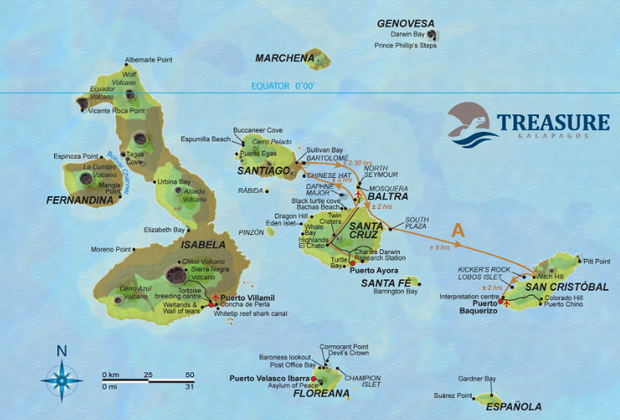
Day 1: Baltra - Sullivan Bay
Upon arrival at Baltra Airport, you will pass through an airport inspection point to insure that no foreign plants or animals are introduced to the islands, as well as to pay the park entrance fee of $100 (unless it has been prepaid). A guide will meet you, help you collect your luggage, and escort you on a short bus ride to the harbour.
Although the great majority of Galapagos visitors come here to observe and appreciate natural wonders, it is also interesting to learn how the protection and conservation of the islands are carried out. The main attractions are the National Park information centre, the Van Staelen Exhibition Hall, the Breeding and Rearing Centre for young tortoises, and adult Galapagos tortoises in captivity.
Day 2: Sullivan Bay - Bartolome
Santiago, also called James Island, is located in the western-central part of the Galapagos archipelago. It is the fourth largest island in the archipelago (following Isabela, Fernandina and Santa Cruz). Along with some of the large western volcanoes of Isabela and Fernandina, Santiago is also volcanically active, with many young flows and cones to be seen, particularly along the southern, western, and eastern coasts. These can even be seen from the summit of Darwin Volcano and from space. A number of large eruptions have been reported over the last 2 centuries. Santiago actually consists of two coalesced volcanoes: a typical shield volcano on the northwest end and a low, linear fissure volcano on the southeast end.
Bartolomé Island is situated across Sullivan Bay. It has an altitude of 114 meters, from where we can observe one of the most beautiful sceneries of the Galapagos Islands such as: Volcanic cones, lunar-like craters, lava fields, and the famous Toba formed pinnacle eroded by the sea. There is very little vegetation on this island.
It has two breathtaking beaches where marine turtles exist and at the base of the pinnacle, as well as a very small colony of Galapagos penguins.
Day 3: North Seymour Island - Mosquera Islet
Seymour is an uplifted (as opposed to volcanic) island and therefore is generally flat and strewn with boulders. There are good nesting sites here for a large population of magnificent frigate birds. Blue-footed boobies perform their courtship dance in the more open areas and swallow-tailed gulls perch on the cliff edges. Despite the tremendous surf that can pound the outer shore, sea lions haul out onto the beach and can be found body surfing.
Do watch your step as the boobies don’t worry much about where they nest, and you might just step on one. The trees are dotted with male frigate birds trying to attract the attention of the ladies by inflating their bright red skin flaps. They sometimes fly in the air to call more attention to themselves. There’s a circular path that takes you through the island to a beautiful, rocky shore where the waves crash a silvery-blue.
Mosquera Islet is located between Baltra and North Seymour. This is a small islet formed by a geological uplift, with a reef of rocks and coral and a great white sand beach, where lie a big population of sea lions. You can also observe several species of shorebirds. This site offers great snorkelling and swimming. Along the rocks it is common to see the Red Lava crabs and Sally light-foot crabs.
Day 4: South Plaza Island - Cerro Brujo
South Plaza is located to the east of Santa Cruz Island, and forms part of a pair of islands known as “Islas Plazas”. Despite its small size, some of the most interesting and outstanding species of the Galapagos are found here. The Plazas land iguanas are smaller than its relatives found at other islands. Throughout the island there are several hybrid iguanas, a result of crossing a marine iguana with a land iguana. They are unique and recognizable at first glance by their black/gray color, with a land iguana’s crest, but face and tail of the marine iguana. The big population of iguanas is due to the presence of “tunas”, their favourite food. Swallow Tailed Gulls nesting in the rugged cliffs are seen along with other sea bids as: Audubon shearwaters, red-billed tropicbirds, frigate birds and brown pelicans.
The primary attraction of this site is the coral sand beach. It is an excellent place to swim and snorkel. Cerro Brujo is the remains of a tuff cone. It is one of the first sites visited by Charles Darwin. Captain Fitzroy climbed to the top of the hill to scout out reefs. It has an impressive landscape, where it is often possible to see coastal and migratory birds, including pelicans, Blue-footed Boobies, and Swallow-tailed Gulls, as well as sea lions and marine iguanas. At times the lagoon is completely dry and deposits of salt may be found in the bottom. The people of Puerto Baquerizo Moreno used to use the lagoon as a salt mine.
Day 5: Interpretation Centre - San Cristobal
The Galapagos National Park Visitor Centre lies close to the port town of Puerto Baquerizo Moreno. The centre explains a series of natural circumstances such as the volcanic origins of the islands, their remoteness from the continent, its ocean currents, its special climate, the arrival of different species, and their establishment, among others.
Transfer to San Cristobal airport for your flight back to Guayaquil or Quito.
Cabin Details
Balcony Stateroom
18m², queen bed or 2 single beds, private balcony, private bathroom, air conditioning & safety deposit box.
Standard Cabin - Twin
18 square metres, two single beds, private balcony, private bathroom, air conditioning & safety deposit box.
Master Suite
40m², king-size bed, two private balconies, private bathroom, air conditioning, safety deposit box, private living room & television.
Treasure of Galapagos Deckplan
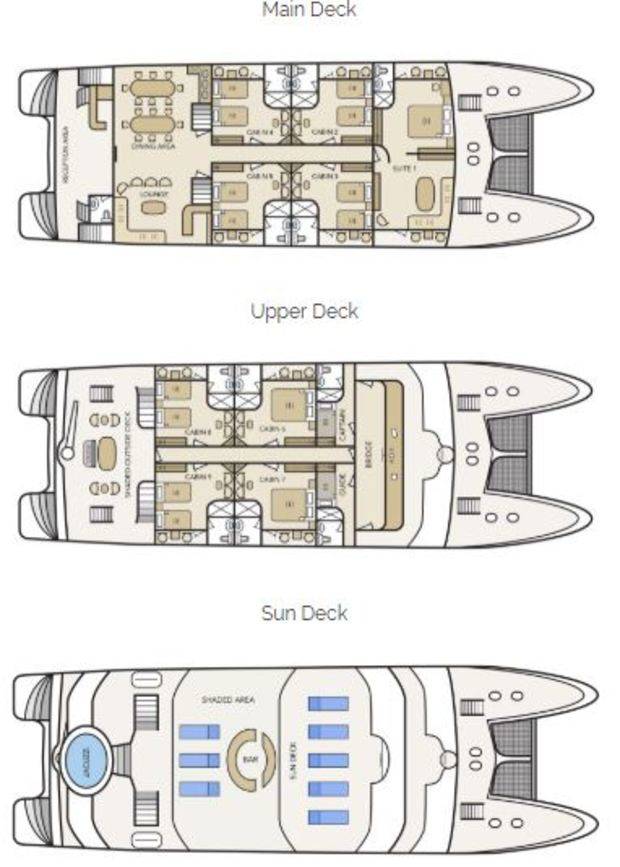
Specifications
- Capacity: 16 passengers
- Length: 30.97 m
- Beam: 11.20 m
- Speed: 12 knots
- Crew: 8 members plus 1 hotel manager and 1 naturalist guide level III
- Social areas: 2 lounges, one TV and DVD area, 1 dining room, 2 bars, 4 different solarium areas, 1 library, 1 boutique.
- Equipment: 2 motors 485 hpm Cummins, 2 generators 75 kw, 3.500 g. fuel, 3.900 g. water desalinate system
Whats included?
- On-board accommodation
- All meals during the voyage
- Activities/shore excursions as specified
- Bilingual naturalist guides
- Transfers
- Use of snorkelling and kayaking equipment
What’s not included?
- International and internal airfares
- Arrival/departure taxes or reciprocity fees, visa fees where applicable
- Travel insurance
- Galapagos National Park fee US$100
- Transit control card US$20
- Gratuities
- Any items not mentioned as included

